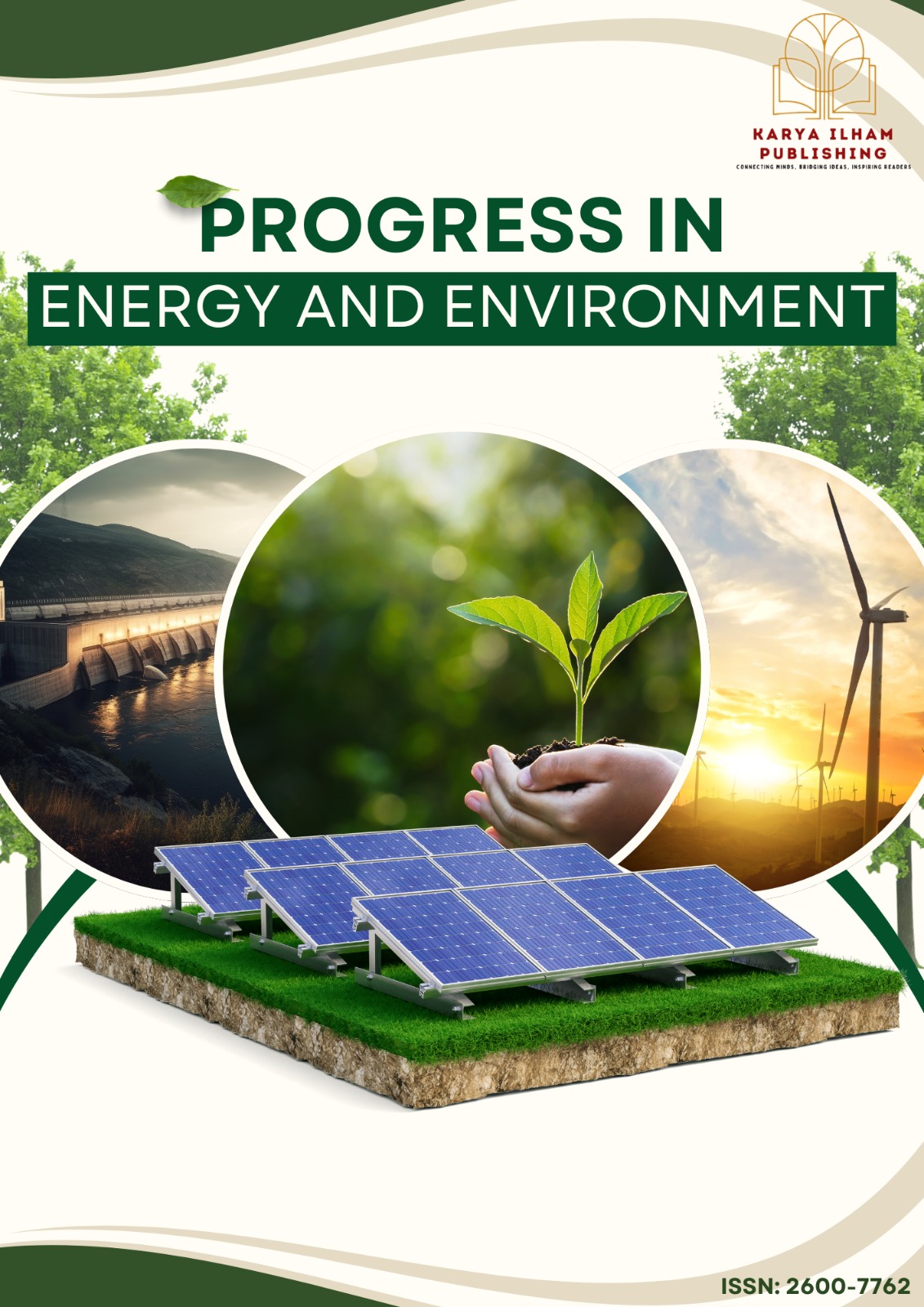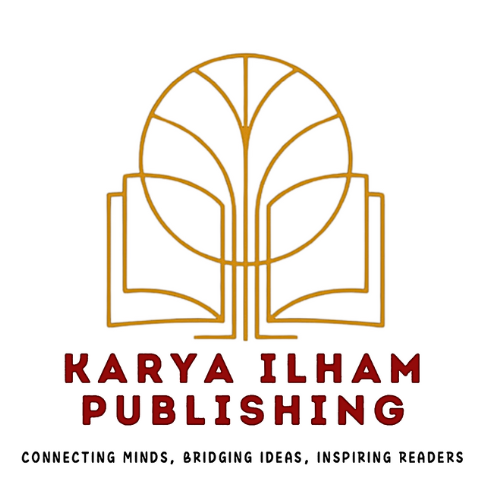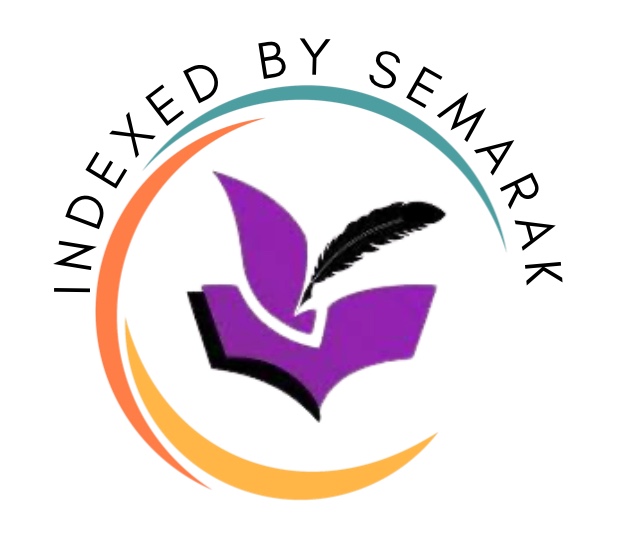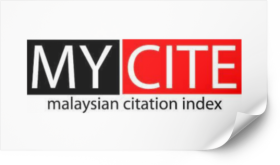Setting Sustainability Benchmarks for High-Rise Building Design in the Context of Hot and Humid Urban Climates
Keywords:
Green Design, High-Rise Building, Hot and Humid Weather, Criteria, AlternativesAbstract
Green design is the process of designing and a development approach that focuses on human health and a way that minimises environmental impacts. In line with the rapid development and growth of the construction industry in Malaysia, green building design has become familiar, especially in high-rise buildings in city areas with many citizens. However, the hot and humid weather is a limitation of green designs for high-rise buildings due to the tropical location of Malaysia. Green design remains in the early phase of science and the approach underlying green building concepts. Numerous concerns persist, and obstacles must be addressed before the industry can achieve substantial advancement in the implementation of efficient green design programs. Malaysia faces innumerable issues regarding the environmental and economic performance of green buildings. A considerable volume of critiques regarding the actual environmental performance of buildings that have received green building certifications for new construction. The execution is deficient due to inadequate knowledge among stakeholders, consultants, and contractors. This study aims to determine the performance of the green designs for high-rise buildings in hot and humid weather. The research also covered establishing a criterion for green design in high-rise buildings under hot and humid weather. However, the last objective of this research is to propose alternatives for improving green design practice for high-rise buildings in hot and humid weather. In addition, the study aims to determine the efficiency, sustainability and security of green designs that can be used in high-rise buildings to transform Malaysia’s construction industry into a more sustainable and environmentally friendly sector. It will ultimately create healthier and more productive spaces by reducing greenhouse gas emissions, improving air quality and saving natural resources.
References
[1] A. Ragheb, H. El-Shimy, and G. Ragheb, Green Architecture: a Concept of Sustainability. Procedia - Social and Behavioral Sciences 216 (2016) 778–787. https://doi.org/10.1016/j.sbspro.2015.12.075.
[2] B. Edwards, Rough Guide to Sustainability, 2005. https://adk.elsevierpure.com/da/publications/rough-guide-to-sustainability.
[3] The Sustainable Development Goals Report 2019, 2019. https://doi.org/10.18356/55eb9109-en.
[4] K. Blok, and E. Nieuwlaar, Introduction to Energy Analysis, Taylor & Francis, 2016.
[5] J.R. Carreón, and E. Worrell, Urban Energy Systems within the Transition to Sustainable Development. A Research Agenda for Urban Metabolism. Resources Conservation and Recycling 132 (2017) 258–266. https://doi.org/10.1016/j.resconrec.2017.08.004.
[6] A. Ghaffarianhoseini, U. Berardi, and A. Ghaffarianhoseini, Thermal Performance Characteristics of Unshaded Courtyards in Hot and Humid Climates. Building and Environment 87 (2015) 154–168. https://doi.org/10.1016/j.buildenv.2015.02.001.
[7] D. Kolokotsa, J. Yang, and A. Pantazaras, Energy Efficiency and Conservation Consideration for the Design of Buildings for Hot and Humid Regions, in: Springer eBooks, 2019: pp. 107–135. https://doi.org/10.1007/978-981-13-7519-4_5.
[8] J. Yang, Y. Zhao, Y. Zou, D. Xia, S. Lou, T. Guo, and Z. Zhong, Improving the Thermal Comfort of an Open Space via Landscape Design: a Case Study in Hot and Humid Areas. Atmosphere 13 (2022) 1604. https://doi.org/10.3390/atmos13101604.
[9] C.M.J. Warren, Green Buildings Pay, Design, Productivity and Ecology. Property Management 32 (2014) 278–279. https://doi.org/10.1108/pm-03-2014-0015.
[10] J. Zuo, S. Pullen, R. Rameezdeen, H. Bennetts, Y. Wang, G. Mao, Z. Zhou, H. Du, and H. Duan, Green Building Evaluation from a Life-Cycle Perspective in Australia: A Critical Review. Renewable and Sustainable Energy Reviews 70 (2016) 358–368. https://doi.org/10.1016/j.rser.2016.11.251.
[11] L. Blackburne, K. Gharehbaghi, and A. Hosseinian-Far, The Knock-on Effects of Green Buildings: high-Rise Construction Design Implications. International Journal of Structural Integrity 13 (2021) 57–77. https://doi.org/10.1108/ijsi-06-2021-0062.
[12] K. Gharehbaghi, and F. Rahmani, Practicalities and Developments of High-Rise Composite Structures: Case Studies. Materials Science Forum 940 (2018) 153–159. https://doi.org/10.4028/www.scientific.net/msf.940.153.
[13] L. Blackburne, K. Gharehbaghi, K. Farnes, O. Moore, and M. Russo, Application of Confirmatory Factor Analysis (CFA) as the Basis of the Evaluation of the Green Building Certification Systems. Journal of Science and Technology Policy Management 14 (2022) 696–712. https://doi.org/10.1108/jstpm-04-2021-0066.
[14] F. Bowen, After Greenwashing: Symbolic Corporate Environmentalism and Society. Choice Reviews Online 52 (2014) 52–1513. https://doi.org/10.5860/choice.185795.
[15] S.O. Ctbuh, Council on Tall Buildings and Urban Habitat Awards 2015: Exemplifying Tall Building Trends. CITYGREEN Nature & Health in Cities 01 (2016) 12. https://doi.org/10.3850/s2382581216010905.
[16] O. Khattab, and A. Al-Mumin, Green Design of Tall Buildings in Kuwait: Obstacles & Opportunities. Open House International 36 (2011) 70–81. https://doi.org/10.1108/ohi-02-2011-b0008.
[17] S.P. Low, S. Gao, and W.L. Tay, Comparative Study of Project Management and Critical Success Factors of Greening New and Existing Buildings in Singapore. Structural Survey 32 (2014) 413–433. https://doi.org/10.1108/ss-12-2013-0040.
[18] S.P. Low, S. Gao, and W.L. Tay, Comparative Study of Project Management and Critical Success Factors of Greening New and Existing Buildings in Singapore. Structural Survey 32 (2014) 413–433. https://doi.org/10.1108/ss-12-2013-0040.
[19] A. De Luca, L. Chen, and K. Gharehbaghi, Sustainable Utilization of Recycled Aggregates: Robust Construction and Demolition Waste Reduction Strategies. International Journal of Building Pathology and Adaptation 39 (2020) 666–682. https://doi.org/10.1108/ijbpa-04-2020-0029.
[20] K. Gharehbaghi, F. Rahmani, and D. Paterno, Adaptability of Materials in Green Buildings: Australian Case Studies and Review. IOP Conference Series Materials Science and Engineering 829 (2020) 012006. https://doi.org/10.1088/1757-899x/829/1/012006.
[21] S.N. Kamaruzzaman, E.C.W. Lou, P.F. Wong, R. Wood, and A.I. Che-Ani, Developing Weighting System for Refurbishment Building Assessment Scheme in Malaysia through Analytic Hierarchy Process (AHP) Approach. Energy Policy 112 (2017) 280–290. https://doi.org/10.1016/j.enpol.2017.10.023.
[22] S.M.J. Alam, Occupants Interaction with Window Blinds in A Green-Certified Office Building in Putrajaya, Malaysia. Journal of Design and Built Environment 19 (2019) 60–73. https://doi.org/10.22452/jdbe.vol19no1.6.
[23] Council on Tall Buildings and Urban Habitat, in: Elsevier eBooks, 2018: pp. v–vi. https://doi.org/10.1016/b978-0-12-815963-7.00022-1.
[24] H.E. Ilgın, Use of Aerodynamically Favorable Tapered form in Contemporary Supertall Buildings. Journal of Design for Resilience in Architecture and Planning 3 (2022) 183–196. https://doi.org/10.47818/drarch.2022.v3i2052.
[25] K. Moon, Supertall Asia/Middle East: Technological Responses and Contextual Impacts. Buildings 5 (2015) 814–833. https://doi.org/10.3390/buildings5030814.
[26] A.A.M. Bohari, M. Skitmore, B. Xia, and X. Zhang, Insights into the Adoption of Green Construction in Malaysia: The Drivers and Challenges. Environment-Behaviour Proceedings Journal 1 (2016) 37. https://doi.org/10.21834/e-bpj.v1i4.165.
[27] M.Z. Tahir, M.N.M. Nawi, and M.F. Rajemi, Building Energy Index: A Case Study of Three Government Office Buildings in Malaysia. Advanced Science Letters 21 (2015) 1798–1801. https://doi.org/10.1166/asl.2015.6239.
[28] X.Y. Tan, N. Mahyuddin, S.N. Kamaruzzaman, N.M. Wajid, and A.M.Z. Abidin, Investigation into Energy Performance of a Multi-Building Complex in a Hot and Humid Climate: Efficacy of Energy Saving Measures. Open House International 49 (2023) 489–513. https://doi.org/10.1108/ohi-04-2023-0085.
[29] K. Yeang, and R. Powell, Designing the Ecoskyscraper: Premises for Tall Building Design. The Structural Design of Tall and Special Buildings 16 (2007) 411–427. https://doi.org/10.1002/tal.414.
[30] L. Blackburne, K. Gharehbaghi, K. Farnes, O. Moore, and M. Russo, Application of Confirmatory Factor Analysis (CFA) as the Basis of the Evaluation of the Green Building Certification Systems. Journal of Science and Technology Policy Management 14 (2022) 696–712. https://doi.org/10.1108/jstpm-04-2021-0066.
[31] E. Serri, M.A. Othuman Mydin, and M.Z. Suleiman, The Influence of Mix Design on Mechanical Properties of Oil Palm Shell Lightweight Concrete. Journal of Materials and Environmental Science 6 (2015) 607–612.
[32] M.A.O. Mydin, Drywall Thermal Properties Exposed to High Temperatures and Fire Condition. Jurnal Teknologi 62 (2013). https://doi.org/10.11113/jt.v62.1369.
[33] N.S.S. Suhaili, N.M.A.O. Mydin, and N.H. Awang, Influence of Mesocarp Fibre Inclusion on Thermal Properties of Foamed Concrete. Journal of Advanced Research in Fluid Mechanics and Thermal Sciences 87 (2021) 1–11. https://doi.org/10.37934/arfmts.87.1.111.
[34] M.A.O. Mydin, M.F.M. Shajahan, S. Ganesan, and N.Md. Sani, Laboratory Investigation on Compressive Strength and Micro-structural Features of Foamed Concrete with Addition of Wood Ash and Silica Fume as a Cement Replacement. MATEC Web of Conferences 17 (2014) 01004. https://doi.org/10.1051/matecconf/20141701004.
[35] M. A. O. Mydin, M. Musa, and A.N.A. Ghani, Fiber Glass Strip Laminates Strengthened Lightweight Foamed Concrete: Performance Index, Failure Modes and Microscopy Analysis. AIP Conference Proceedings 2016 (2018) 020111. https://doi.org/10.1063/1.5055513.
[36] M.A.O. Mydin, N.Md. Noordin, N. Utaberta, M.Y.M. Yunos, and S. Segeranazan, Physical Properties of Foamed Concrete Incorporating Coconut Fibre. Jurnal Teknologi 78 (2016). https://doi.org/10.11113/jt.v78.8250.
[37] M.A.O. Mydin, Modeling of Transient Heat Transfer in Foamed Concrete Slab. Directory of Open Access Journals (2013). https://doaj.org/article/494752dfe026401da3f4f0fc83a60325.
[38] M.A.O. Mydin, Thin-walled Steel Enclosed Lightweight Foamcrete: A Novel Approach to Fabricate Sandwich Composite. Australian Journal of Basic and Applied Sciences 5 (2011) 1727–1733.
[39] M.A.O. Mydin, N.M. Sani, and A.F. Phius, Investigation of Industrialised Building System Performance in Comparison to Conventional Construction Method. MATEC Web of Conferences 10 (2014) 04001. https://doi.org/10.1051/matecconf/20141004001.
[40] M.A.O. Mydin, P. Jagadesh, A. Bahrami, A. Dulaimi, Y.O. Özkılıç, M.M.A.B. Abdullah, and R.P. Jaya, Use of Calcium Carbonate Nanoparticles in Production of Nano-Engineered Foamed Concrete. Journal of Materials Research and Technology 26 (2023) 4405–4422. https://doi.org/10.1016/j.jmrt.2023.08.106.
[41] M.A.O. Mydin, N.M. Zamzani, and A.N.A. Ghani, Effect of Alkali-Activated Sodium Hydroxide Treatment of Coconut Fiber on Mechanical Properties of Lightweight Foamed Concrete. AIP Conference Proceedings (2018). https://doi.org/10.1063/1.5055510.
[42] A.M.J. Esruq-Labin, A.I. Che-Ani, N.M. Tawil, M.N.M. Nawi, and M.A.O. Mydin, Criteria for Affordable Housing Performance Measurement: A Review. E3S Web of Conferences 3 (2014) 01003. https://doi.org/10.1051/e3sconf/20140301003.
[43] M.A.O. Mydin, J.C. Khor, and N.Md. Sani, Approaches to Construction Waste Management in Malaysia. MATEC Web of Conferences 17 (2014) 01014. https://doi.org/10.1051/matecconf/20141701014.
[44] M. Alyami, M.A.O. Mydin, A.M. Zeyad, S.S. Majeed, and B.A. Tayeh, Influence of Wastepaper Sludge Ash as Partial Cement Replacement on The Properties of Lightweight Foamed Concrete. Journal of Building Engineering 79 (2023) 107893. https://doi.org/10.1016/j.jobe.2023.107893.
[45] M.A.O. Mydin, N.A. Rozlan, N.Md. Sani, and S. Ganesan, Analysis of Micro-Morphology, Thermal Conductivity, Thermal Diffusivity and Specific Heat Capacity of Coconut Fibre Reinforced Foamed Concrete. MATEC Web of Conferences 17 (2014) 01020. https://doi.org/10.1051/matecconf/20141701020.
[46] A.M. Maglad, M.A.O. Mydin, S.S. Majeed, B.A. Tayeh, and S.A. Mostafa, Development of Eco-Friendly Foamed Concrete with Waste Glass Sheet Powder for Mechanical, Thermal, and Durability Properties Enhancement. Journal of Building Engineering 80 (2023) 107974. https://doi.org/10.1016/j.jobe.2023.107974.
[47] M. a. O. Mydin, and N.M. Zamzani, Coconut Fiber Strengthen High Performance Concrete: Young’s Modulus, Ultrasonic Pulse Velocity and Ductility Properties. International Journal of Engineering & Technology 7 (2018) 284. https://doi.org/10.14419/ijet.v7i2.23.11933.
[48] A.M. Maglad, M.A.O. Mydin, R.C. Kaze, I.S. Abbood, and B.A. Tayeh, Synergistic Effect of Waste Gypsum Plasterboard and Fly Ash as Partial Cement Replacement on Fresh-State, Microstructural, Mechanical and Transport Properties of Foamed Concrete. Construction and Building Materials 463 (2025) 140079. https://doi.org/10.1016/j.conbuildmat.2025.140079.
[49] M. Alharthai, M.A.O. Mydin, R.C. Kaze, S.S. Majeed, and B.A. Tayeh, Properties of Ultra Lightweight Foamed Concrete Utilizing Agro Waste Ashes as an Alkaline Activated Material. Journal of Building Engineering 90 (2024) 109347. https://doi.org/10.1016/j.jobe.2024.109347.
[50] M.A.O. Mydin, M.M.A.B. Abdullah, N.H. Sor, R. Omar, A. Dulaimi, P.O. Awoyera, F. Althoey, and A.F. Deifalla, Thermal Conductivity, Microstructure and Hardened Characteristics of Foamed Concrete Composite Reinforced with Raffia Fiber. Journal of Materials Research and Technology 26 (2023) 850–864. https://doi.org/10.1016/j.jmrt.2023.07.225.
[51] M.A.O. Mydin, M.N.M. Nawi, O. Mohamed, and M.W. Sari, Mechanical Properties of Lightweight Foamed Concrete Modified with Magnetite (Fe3O4) Nanoparticles. Materials 15 (2022) 5911. https://doi.org/10.3390/ma15175911.
[52] M. Musa, M. A. O. Mydin, and A.N.A. Ghani, Influence of Oil Palm Empty Fruit Bunch (EFB) Fibre on Drying Shrinkage in Restrained Lightweight Foamed Mortar. International Journal of Innovative Technology and Exploring Engineering 8 (2019) 4533–4538. https://doi.org/10.35940/ijitee.j1080.0881019.
[53] M.A.O. Mydin, S. Ganesan, M.Y.M. Yunos, N. Utaberta, and N.A. Ismail, Structural Behaviour of Coir Fibre-Reinforced Foamed Concrete Wall Panel System. Jurnal Teknologi 78 (2016). https://doi.org/10.11113/jt.v78.8276.
[54] M.A.O. Mydin, N.A. Othman, and N.Md. Sani, A Prospective Study on Building Quality: Relationship between Workmanship Quality and Common Building Defects of Low-cost Construction Projects. MATEC Web of Conferences 17 (2014) 01001. https://doi.org/10.1051/matecconf/20141701001.
[55] S.S. Majeed, M.A.O. Mydin, A. Bahrami, A. Dulaimi, Y.O. Özkılıç, R. Omar, and P. Jagadesh, Development of Ultra-Lightweight Foamed Concrete Modified with Silicon Dioxide (SiO2) Nanoparticles: Appraisal of Transport, Mechanical, Thermal, and Microstructural Properties. Journal of Materials Research and Technology 30 (2024) 3308–3327. https://doi.org/10.1016/j.jmrt.2024.01.282.
[56] M.A.O. Mydin, N.H. Sor, F. Althoey, Y.O. Özkılıç, M.M.A.B. Abdullah, H.F. Isleem, A.F. Deifalla, and T.A. Tawfik, Performance of Lightweight Foamed Concrete Partially Replacing Cement with Industrial and Agricultural Wastes: Microstructure Characteristics, Thermal Conductivity, and Hardened Properties. Ain Shams Engineering Journal 14 (2023) 102546. https://doi.org/10.1016/j.asej.2023.102546.
[57] M.A.O. Mydin, M.N.M. Nawi, R. Omar, M.A. Khadimallah, I.M. Ali, and R. Deraman, The Use of Inorganic Ferrous–Ferric Oxide Nanoparticles to Improve Fresh and Durability Properties of Foamed Concrete. Chemosphere 317 (2023) 137661. https://doi.org/10.1016/j.chemosphere.2022.137661.
[58] T.S. Jing, M.A.O. Mydin, and N. Utaberta, Appraisal of Moisture Problem of Inheritance Building Envelope Assemblies via Visible and Infrared Thermography Methods. Jurnal Teknologi 75 (2015). https://doi.org/10.11113/jt.v75.4951.
[59] M. A. O. Mydin, Effect of Silica Fume and Wood Ash Additions on Flexural and Splitting Tensile Strength of Lightweight Foamed Concrete. Jurnal Teknologi 74 (2015). https://doi.org/10.11113/jt.v74.3653.
[60] M.A.O. Mydin, M.N.M. Nawi, R.A. Odeh, and A.A. Salameh, Durability Properties of Lightweight Foamed Concrete Reinforced with Lignocellulosic Fibers. Materials 15 (2022) 4259. https://doi.org/10.3390/ma15124259.
[61] A.M. Serudin, M.A.M. Othuman, and A.N.A. Ghani, Effect of Lightweight Foamed Concrete Confinement with Woven Fiberglass Mesh on its Drying Shrinkage. Revista De Ingeniería De ConstruccióN 36 (2021) 21–28. https://doi.org/10.4067/s0718-50732021000100021.
[62] A.M. Serudin, M.A.O. Mydin, and A.N.A. Ghani, Influence of Fibreglass Mesh on Physical Properties of Lightweight Foamcrete. IIUM Engineering Journal 22 (2021) 23–34. https://doi.org/10.31436/iiumej.v22i1.1446.
[63] M.A.O. Mydin, The Effect of Raw Mesocarp Fibre Inclusion on the Durability Properties of Lightweight Foamed Concrete. ASEAN Journal on Science and Technology for Development 38 (2021). https://doi.org/10.29037/ajstd.685.
[64] M.A.O. Mydin, N. Sarpin, R.M. Zainol, R. Odeh, and M.N.M. Nawi, The Impact of Climatological Factors on the Multifaceted and Multisystemic Deficiencies of Building Anatomy. Journal of Advanced Research in Applied Sciences and Engineering Technology 50 (2024) 308–329. https://doi.org/10.37934/araset.50.1.308329.
[65] A. Dulaimi, Q.S. Banyhussan, J. Abdulrazzaq, M.A.O. Mydin, A. Al-Bdairi, and R.R.A. Almuhanna, Effect of Water Content and Degree of Compaction of Clay Subgrade Soil on the Interface Shear Strength using Geogrid. Journal of Advanced Research in Applied Sciences and Engineering Technology (2024) 262–280. https://doi.org/10.37934/araset.52.2.262280.
[66] M.A.O. Mydin, A.I.C. Ani, A. Dulaimi, M.N.M. Nawi, and R. Omar, Assessing the Effects of Insect Attacks on Buildings and Practical Corrective Measures. Journal of Advanced Research in Applied Sciences and Engineering Technology 50 (2024) 1–17. https://doi.org/10.37934/araset.50.1.117.
[67] N.F. Zahari, M.A. Bakar, S.D.M. Wahid, and M.A.O. Mydin, Implementation of Quality Management System for Historical Building Conservation. MATEC Web of Conferences 15 (2014) 01027. https://doi.org/10.1051/matecconf/20141501027.
[68] M.A.O. Mydin, N.H. Ja’afar, N. Norazman, M.A. Zaidi, and M.N.M. Nawi, Appraisal of the aetiology and Pathology of Soil Settlement-Related Building Defects and Failures. Journal of Advanced Research in Applied Sciences and Engineering Technology 50 (2024) 286–307. https://doi.org/10.37934/araset.50.1.286307.
[69] P. Arokiasamy, M.M.A.B. Abdullah, E. Arifi, N.H. Jamil, M.A.O. Mydin, S.Z.A. Rahim, A.V. Sandu, and S. Ishak, Sustainable Geopolymer Adsorbents Utilizing Silica Fume as a Partial Replacement for Metakaolin in the Removal of Copper Ion from Synthesized Copper Solution. Case Studies in Construction Materials (2024) e04142. https://doi.org/10.1016/j.cscm.2024.e04142.
[70] A.M. Maglad, M.A.O. Mydin, R.C. Kaze, I.S. Abbood, and B.A. Tayeh, Synergistic Effect of Waste Gypsum Plasterboard and Fly Ash as Partial Cement Replacement on Fresh-State, Microstructural, Mechanical and Transport Properties of Foamed Concrete. Construction and Building Materials 463 (2025) 140079. https://doi.org/10.1016/j.conbuildmat.2025.140079.
[71] S. Shahari, M.F. Ghazli, M.M.A.B. Abdullah, T.C. Lih, M.A.O. Mydin, M.S. Osman, V.T. Le, and M.F.M. Tahir, A Comparative Study on Effects of Fly Ash and Fly Ash Based Geopolymer on the Fire and Mechanical Properties of Glass Fibre Reinforced Epoxy Composite. Construction and Building Materials 457 (2024) 139434. https://doi.org/10.1016/j.conbuildmat.2024.139434.
[72] M.A.O. Mydin, P. Jagadesh, A. Bahrami, S.S. Majeed, A. Dulaimi, and R. Omar, Study on Fresh and Hardened State Properties of Eco-Friendly Foamed Concrete Incorporating Waste Soda-Lime Glass. Scientific Reports 14 (2024). https://doi.org/10.1038/s41598-024-69572-4.
[73] A.A. Sattar, M.A.O. Mydin, and M. Shahadat, Developing Innovative Nano-Engineered Lightweight Foamed Concrete Incorporating Iron Oxide (II, III) with Enhanced Mechanical and Transport Properties. Journal of Advanced Research Design 122 (2024) 8–26. https://doi.org/10.37934/ard.122.1.826.
[74] M.A.O. Mydin, Study on the Engineering Properties of Lightweight Foamed Concrete Modified with Palm Stalk Fiber as an Additive. Journal of Advanced Research Design 121 (2024) 11–21. https://doi.org/10.37934/ard.121.1.1121.
[75] M.A.O. Mydin, R. Omar, M.N.M. Nawi, W.N.W. Ismail, and N. Norazman, Identifying and Categorizing Building Defects and Failures caused by Overloading. Journal of Advanced Research in Applied Mechanics 122 (2024) 186–204. https://doi.org/10.37934/aram.122.1.186204.
[76] M.A.O. Mydin, The Potential Use of Palm Frond Fibre on the Mechanical Performance of Lightweight Foamed Concrete. Journal of Advanced Research Design 120 (2024) 36–46. https://doi.org/10.37934/ard.120.1.3646.
[77] M.A.O. Mydin, A.I.C. Ani, N.F.A.N. Yahya, N.Y.@ Ya’acob, and M.N.M. Nawi, The Influence of Impact and Explosion as Agents of Defects on the Structural Integrity of Buildings. Journal of Advanced Research in Applied Mechanics 121 (2024) 222–238. https://doi.org/10.37934/aram.121.1.222238.
[78] A.M. Maglad, M.A.O. Mydin, S.D. Datta, I.S. Abbood, and B.A. Tayeh, Impact of Anionic Surfactant-Based Foaming Agents on the Properties of Lightweight Foamed Concrete. Construction and Building Materials 438 (2024) 137119. https://doi.org/10.1016/j.conbuildmat.2024.137119.
[79] N.J. Japok, N.M.A.O. Mydin, and N.R. Omar, Identification of Structural and Non-Structural Defects of Load-Bearing Wall Systems in Low Rise Buildings. Journal of Advanced Research in Applied Mechanics 120 (2024) 171–188. https://doi.org/10.37934/aram.120.1.171188.
[80] M.A.O. Mydin, Preliminary Studies on the Development of Lime-based Mortar with Added Egg White. International Journal of Technology 8 (2017) 800. https://doi.org/10.14716/ijtech.v8i5.442.
[81] A.M. Maglad, M.A.O. Mydin, S.D. Datta, and B.A. Tayeh, Assessing the Mechanical, Durability, Thermal and Microstructural Properties of Seashell Ash based Lightweight Foamed Concrete. Construction and Building Materials 402 (2023) 133018. https://doi.org/10.1016/j.conbuildmat.2023.133018.
[82] M.A. Tambichik, A.A.A. Samad, N. Mohamad, A.Z.M. Ali, M.A.O. Mydin, M.Z.M. Bosro, and M.A. Iman, Effect of Combining Palm Oil Fuel Ash (POFA) and Rice Husk Ash (RHA) as Partial Cement Replacement to the Compressive Strength of Concrete. International Journal of Integrated Engineering, 10 (2018). https://doi.org/10.30880/ijie.2018.10.08.004.
[83] S. Ganesan, M.A.O. Mydin, N.Md. Sani, and A.I.C. Ani, Performance of Polymer Modified Mortar with Different Dosage of Polymeric Modifier. MATEC Web of Conferences, 15 (2014) 01039. https://doi.org/10.1051/matecconf/20141501039.
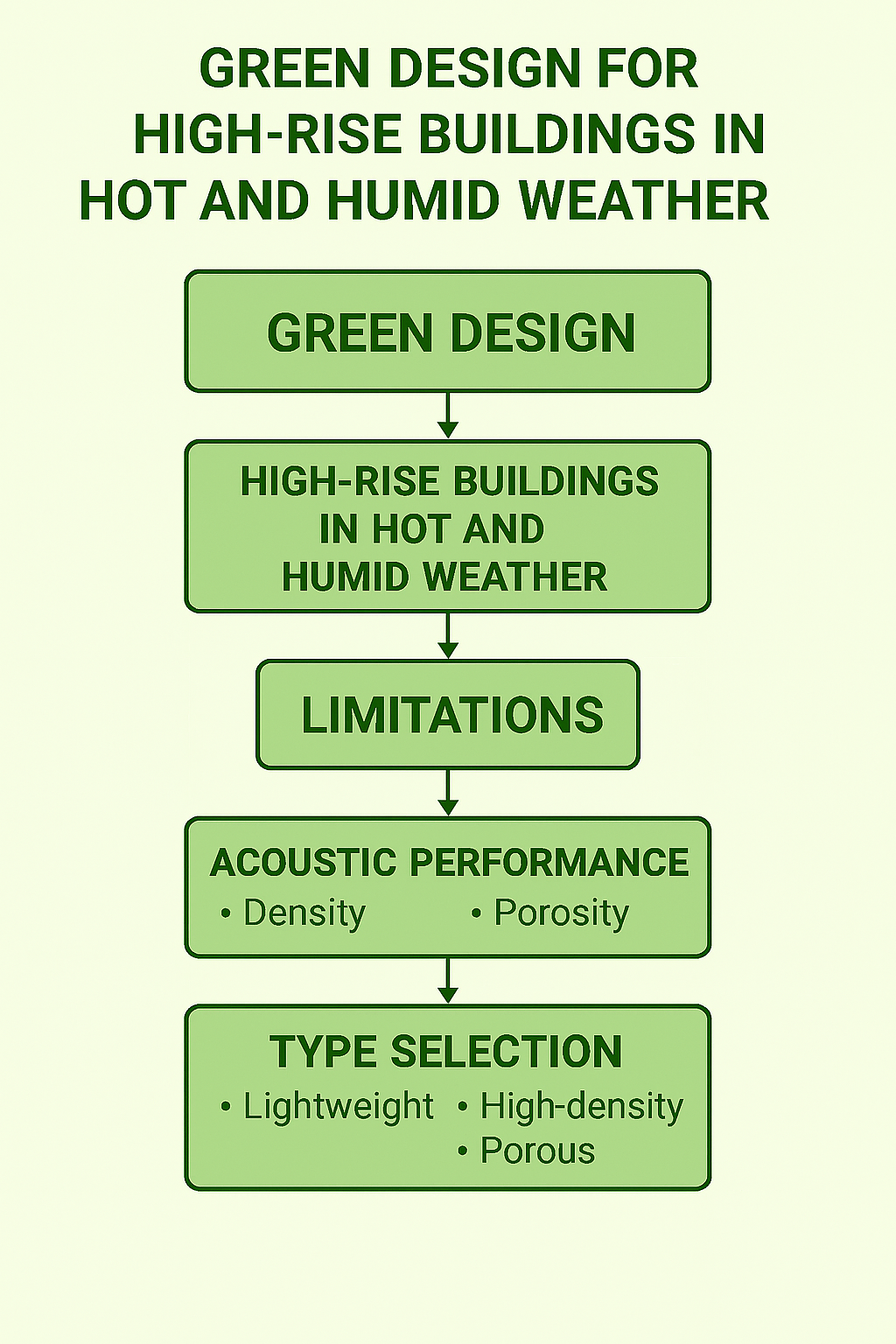
Downloads
Published
Issue
Section
License
Copyright (c) 2025 Progress in Energy and Environment

This work is licensed under a Creative Commons Attribution-NonCommercial 4.0 International License.
